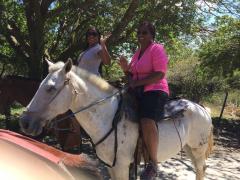DECISION TIME – MAKING YOUR COLLEGE SELECTION
Colleges and universities have identified those students who will comprise the Class of 2022 at their institutions. Admission decisions have been communicated via college portals, thick envelopes in the mail and by email. The ball is now in your court – it’s decision time!
Whether you were accepted to your top-choice college or denied admission by a “target” or “safety” school, there are some common things you need to do as you approach the proverbial finish line. First, let’s address the elephant in the room. Rejection hurts, even if it comes from a school that was not your first choice. But remember that it’s not personal – it’s not that the admission officer didn’t like you. And you are not alone; enrollment management practices at institutions feed the frenzy to be viewed as selective, resulting in admission rates in single digits or low teens. Don’t dwell on the “what-if’s” at this point, as you cannot go back in time to get better grades or test scores.
Celebrate the acceptances you received! Focus on those schools who have chosen you to become a member of their community. If your college list was created well, you should be happy to attend any of the colleges to which you applied; this should have also helped you manage your expectations for admission decisions. Assuming you received more than one offer of admission, your task now is to narrow down your list and commit to attend one of them prior to the universal student reply date of May 1, 2018.
Narrow your list of schools. Strategies to do this might include: a simple pro/con chart for each school, or a review of each school to see how they fit key criteria you established early in the application process. This is the time to ask deeper questions to help you figure out which college or academic program has what you are seeking. Consider which schools offer more assistance with job placement and internships. Which ones offer study abroad programs that enable you to still graduate in four years?
Attend events for admitted students – on campus or locally, and check out alumni-sponsored receptions in your area. I strongly suggest that you visit the campuses of the top schools on your list – even if you visited before. Now that you’ve been admitted, the lens through which you view a school as your potential “home” for the next four years is different than when you were “testing the waters” to determine if you wanted to add the school to your college list. Make sure you meet deadlines related to housing, special programs, disability support services, etc.
Evaluate the financial aid offers for each of the schools under consideration. Remember that all financial aid offers are not created equal! Be certain that you understand your family’s out-of-pocket expenses to attend each of the schools, and beware of aid offers that do not include the total cost of attendance and those that include a significant amount of loans. The conversation and evaluation of finances should definitely be a family discussion.
If you are waitlisted, don’t despair, but do decide whether you still want to attend the school. If not, contact the admission office(s) and let them know you wish to be removed from the waitlist; this will create space for students who remain interested in attending the school. Be sure to understand what the next steps are to remain on the list and improve your chances of admission. This might include sending updated GPA information or awards, submitting additional test results, or providing letters of support, etc.
Take your time to make a sound decision, but do adhere to the deadlines for notifying schools. Accept only one offer, as it is unethical to “double-deposit”, and can result in admission offers being rescinded. Notify the colleges you choose not to attend, so that spots will be opened up for other students.
At the end of the day, after you have examined all of the “facts”, sometimes you just go with your gut. Once you make the decision, and send in your deposit, “own” it! Now it’s time to enjoy the rest of your senior year and start getting ready for your transition to college. Good luck!
Antoinette Battiste is an Independent Educational Consultant and 20+ year resident of Evergreen. She is an active volunteer with many community organizations in Silicon Valley, including Alpha Kappa Alpha Sorority, Inc., Santa Clara County Alliance of Black Educators, Silicon Valley Black Chamber of Commerce the African American Community Services Agency, and the Northern California Association of Morehouse Parents.

 Last month I vacationed with my family in Costa Rica. Being fairly fluent in Spanish, I wasn’t concerned about a language barrier. The friendly Costa Rican people made me feel welcomed in their country. Having a guide for our planned activities was comforting; I had already decided that zip-lining across the rainforest was not something I would do. But on the fourth day of my ten day vacation, I found myself participating in not one, but two activities that took me well past the boundaries of my comfort zone.
Last month I vacationed with my family in Costa Rica. Being fairly fluent in Spanish, I wasn’t concerned about a language barrier. The friendly Costa Rican people made me feel welcomed in their country. Having a guide for our planned activities was comforting; I had already decided that zip-lining across the rainforest was not something I would do. But on the fourth day of my ten day vacation, I found myself participating in not one, but two activities that took me well past the boundaries of my comfort zone. Yes, stepping outside of one’s comfort zone is truly a life skill. No matter how big or small the steps are, the most important thing is to be willing to push yourself beyond the limits you believe you have. I am certain this attitude is what pushed me to finish my ride on Palmino and make it across – and back across – that bridge. I stepped far out of my comfort zone, and I survived. You can, too! Remember The Journey Begins with You …Good luck!
Yes, stepping outside of one’s comfort zone is truly a life skill. No matter how big or small the steps are, the most important thing is to be willing to push yourself beyond the limits you believe you have. I am certain this attitude is what pushed me to finish my ride on Palmino and make it across – and back across – that bridge. I stepped far out of my comfort zone, and I survived. You can, too! Remember The Journey Begins with You …Good luck!